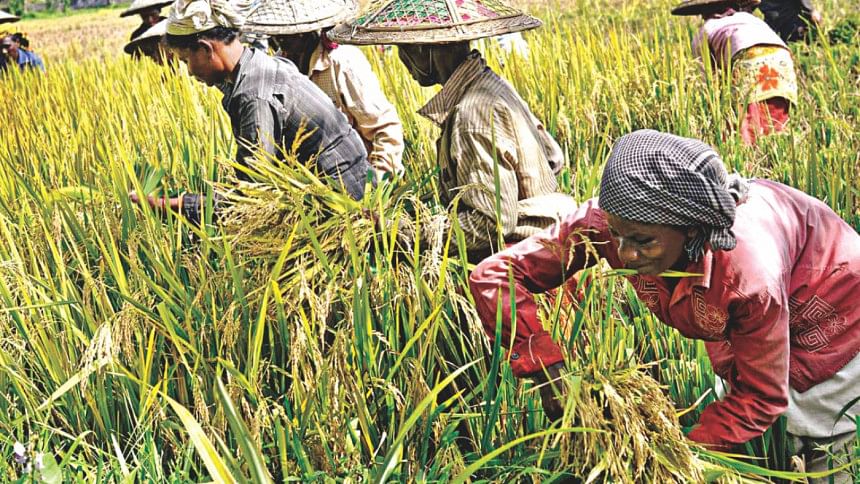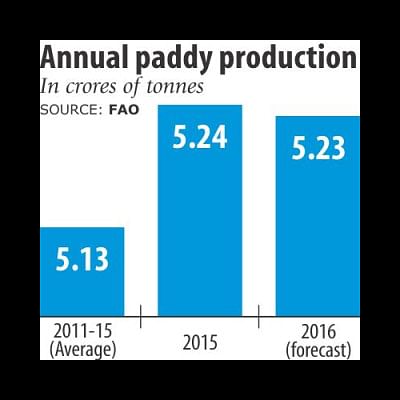Record aman yield in the offing

Farmers are on course to bagging higher paddy from the aman harvesting season thanks to favourable weather and increased plantation, said the Food and Agriculture Organisation of the United Nations.
Aman typically accounts for 38 percent of the country's annual rice production.
This season, about 2.06 crore tonnes of aman paddy would be produced, up 2 percent from last year's record output, said the UN agency. The 2.06 crore tonnes of paddy would yield 1.36 crore tonnes of rice.

“This reflects an increase in the area planted in response to a rebound in prices and continued government support and higher yields due to favourable weather conditions,” said FAO in its latest brief on Bangladesh.
The prediction comes at a time when harvesting of aman paddy has started in various parts of the country, leading to a fall in prices of the staple from the record highs in October.
Retail and wholesale prices of rice surged for the fifth consecutive month and reached record highs last month as a result of tightening domestic supplies, said FAO in its Domestic Price Warnings on Bangladesh, posted on its website on November 10.
The UN agency put the price warning level at 'high' for Bangladesh.
In Dhaka, the retail price of coarse rice shot up to Tk 40 per kilogram in October, according to data from the Department of Agricultural Marketing and Trading Corporation of Bangladesh.
The price came down to Tk 37 each kilogram yesterday.
In its Domestic Price Warnings, FAO said seasonal upward pressure was compounded by the reduced output in 2016 from the main boro and minor aus crops.
“Government purchases, although of small quantities, also added some upward pressure,” it said, adding that another driver for the rising prices was the reduced rice import this year.
Boro paddy production was officially estimated at 2.84 crore tonnes (1.89 crore tonnes of rice), which is slightly below 2015's record level, owing to a contraction in planted areas, mainly in response to low domestic prices at the time of sowing.
Similarly, low prices were behind the reduced acreage for aus crop in 2016, as a result of which its production was lower than a year earlier, said the UN body.
However, the favourable weather conditions during the aman cropping season benefitted sowing activities and crop development.
Farmers have planted seedlings on 56.93 lakh hectares during the aman crop season this year, up 2 percent year-on-year, according to preliminary data of the Department of Agricultural Extension.
A top official of the DAE also predicted good harvest this season.
Paddy production in 2016 will definitely be 5.23 crore tonnes, marginally below the last year's level, according to FAO's estimates.
Cereal imports are also likely to drop 6 percent to 53 lakh tonnes this fiscal year because of low rice imports on expectation of sufficient local availability and increased import duties. Wheat imports are anticipated to remain close to last year's record of 44 lakh tonnes, FAO said.

 For all latest news, follow The Daily Star's Google News channel.
For all latest news, follow The Daily Star's Google News channel. 



Comments